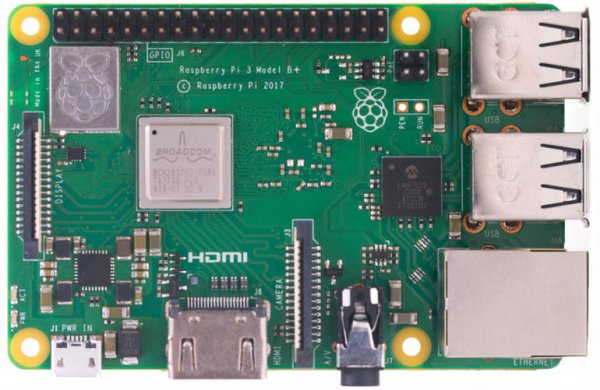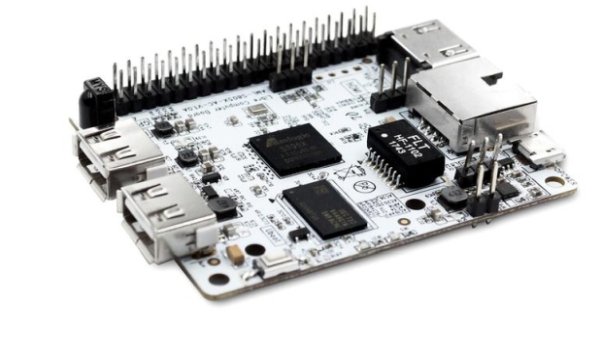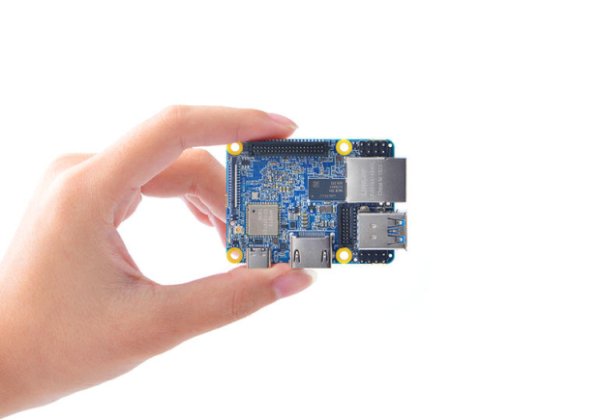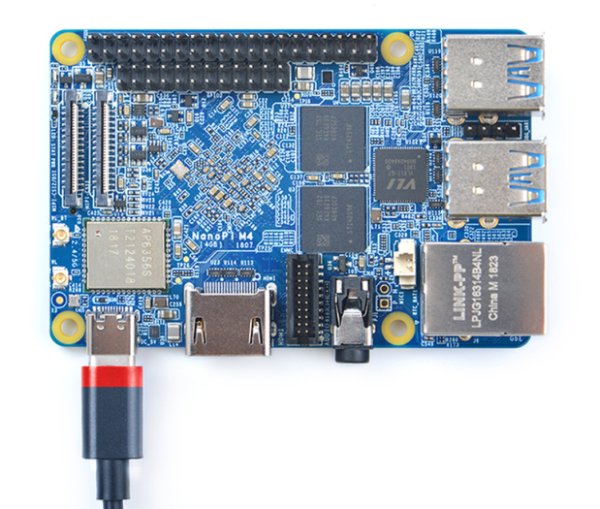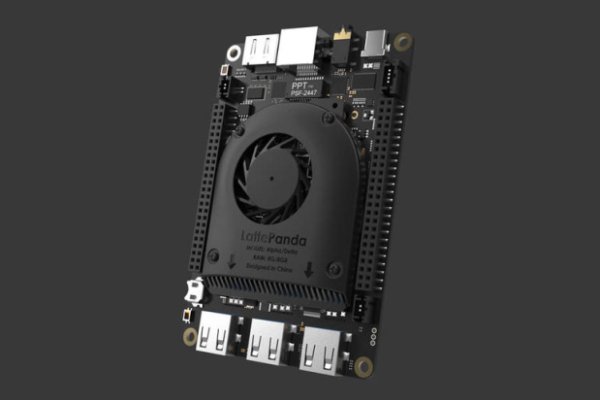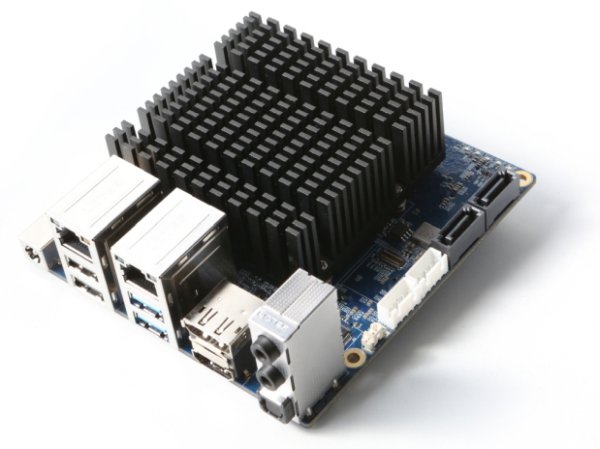1. Raspberry Pi with a twist
As versatile as the $35 Raspberry Pi is, it is just one of many single-board computers available to buy today.
The Pi strikes a fine balance between performance, price, and usability, but leaves plenty of room for other boards to tweak that formula.
This Fall has seen the release of a swathe of new boards, some ramping up the price to add PC-like features — such support for fast SSD storage and Intel Core processors — while others trim specs to cut costs.
These boards are generally aimed at software developers, hardware hackers and tech enthusiasts working on projects like home media servers. However, it's worth pointing out that few boards are as accessible or offer the same breadth of stable software as the Pi.
This gallery is also available as a single-page article.
Click through this gallery to see the most interesting single-board computers revealed or released in recent months.
Image: Raspberry Pi Foundation
2. La Frite
What it offers
The $15 La Frite comes close to matching the $35 Pi 3 B+ in some key respects, using the same underlying Arm-based CPU and even offering faster DDR4 memory.
On paper, the La Frite also promises comparable video playback performance to the Pi 3 B+, can output to 1080p displays via HDMI 1.4, and offers two USB 2.0 ports.
As you'd expect there are various cutbacks. The board is missing the Pi 3 B+'s Wi-Fi support, offers a slightly slower wired Ethernet connection, and has a slightly slower processor.
Specs
CPU: Quad-core 64-bit Arm Cortex A53 CPU @ 1.2GHz
GPU: Mali-450
Memory: 512MB / 1GB DDR4 @ 2400MHz
Display: HDMI 1.4 with 1080P output
Connectivity: 100MB Ethernet
Ports: USB 2.0 host, USB 2.0 OTG
Misc: IR sensor, 128Mb SPI NOR
Where to buy
The board is available to buy here for $15.
Image: Libre Computer Project
3. NanoPi NEO4
What it offers
The cheapest six-core single-board computer to be released, boasting relatively modern features like USB 3.0 and support for 4K displays.
But there's a catch, the board may only cost $45, only $10 more than the Raspberry Pi 3 B+, but it only comes with 1GB of memory, has slower Wi-Fi, and fewer Type-A USB ports.
If you can work within limitations of the memory, the board also supports reasonably fast data transfer via its USB 3.0 and Gigabit Ethernet ports, as well as one USB 2.0 Type-C port. Additionally, there's potential for adding fast SSD storage via a PCIe x2 interface and 4K video out via HDMI 2.0.
Specs
| CPU | Model: Rockchip RK3399 Number of Cores: big.LITTLE, 64-bit Dual Core Cortex-A72 + Quad Core Cortex-A53 Frequency: Cortex-A72(up to 2.0GHz), Cortex-A53(up to 1.5GHz) |
| GPU | Mali-T864 GPU,supports OpenGL ES1.1/2.0/3.0/3.1, OpenVG1.1, OpenCL, DX11, and AFBC |
| VPU | 4K VP9 and 4K 10bits H265/H264 60fps decoding, Dual VOP, etc |
| Memory | 1GB DDR3-1866 |
| Storage | eMMC: no Onboard eMMC, but has a eMMC socketMicroSD Slot: MicroSD*1 for external storage up to 128GB |
| Connectivity | Gbps Ethernet WiFi: 802.11 b/g/n, Bluetooth 4.0 combo module Antenna*1: IPX Connector |
| Audio | Audio Output: HDMI |
| Video Input | one 4-Lane MIPI-CSI, up to 13MPix/s |
| Video Output | HDMI*1: HDMI 2.0a, supports 4K@60Hz,HDCP 1.4/2.2 |
| USB | 1x USB 3.0 Type-A ports 1xUSB Type-C*1 – supports USB2.0 OTG and power input 2xUSB 2.0: USB 2.0 Host, one is Type-A, the other is 2.54mm header |
| Pin-header | GPIO1: 40pin2 X 3V I2C, 1x 3V UART/SPI, 1 x SPDIF_TX, up to 8 x 3V GPIOsPCIe x2PWM x1, PowerKeyGPIO2:1 x 1.8V 8ch-I2SGPIO3:debug uart, 3V level, 1500000bpsUSB 2.0 x1 |
| LED | Power LED(Red)*1GPIO Controlled LED(Green)*1 |
| Others | RTC Battery: 2 Pin 2.54mm pitch through-hole padWorking Temperature: -20℃ to 70℃ |
| Power | DC 5V/3A |
Where to buy
Available here for $45.
Image: FriendlyElec
4. NanoPi M4
What it offers
The NanoPi M4 is almost double the price the $35 Raspberry Pi but ups its specs across the board.
Notable features include four USB 3.0 ports, a USB Type-C port, 2GB DDR3 memory, a six-core processor, support for 4K displays and hardware-accelerated 4K video playback, and 64 general-purpose input-output (GPIO) pins for hooking up hardware. It also includes an interface that supports two 13-megapixel cameras.
While the Pi supports a far wider range of operating systems, the NanoPi M4 is listed as supporting Android 7.1, alongside Ubuntu 18.04 Desktop and Ubuntu Core.
It's worth noting that some users of recent NanoPi boards have also encountered driver problemsand system setup issues, so this board and the NEO4 may be for the more technically proficient.
Specs
| CPU | Model: Rockchip RK3399Cores: Six cores, 2GHz 64-bit dual-core Cortex-A72 and 1.5GHz quad-core Cortex-A53 |
| GPU | Mali-T864, supports OpenGL ES1.1/2.0/3.0/3.1, OpenVG1.1, OpenCL, DX11, and AFBC |
| Supported codecs | 4K VP9 and 4K 10bits H265/H264 60fps decoding, Dual VOP |
| Memory | Dual-channel 4GB LPDDR3-1866 (for an additional $30) or dual-channel 2GB DDR3-1866 |
| Storage | eMMC: no Onboard eMMC, but has a eMMC socketMicroSDSlot: MicroSD for external storage up to 128GB |
| Connectivity | Ethernet: Native Gbps EthernetWiFi: 802.11a/b/g/n/ac, Bluetooth 4.1, Wi-Fi and Bluetooth combo module, dual antenna interface |
| Audio | 3.5mm dual-channel headphone jack, or HDMIAudio Input: microphone input interface |
| Video Input | One or two four-Lane MIPI-CSI, dual ISP, up to 13MPix/s, supports simultaneous input of dual camera data |
| Video Output | HDMI 2.0a, supports 4K@60Hz, HDCP 1.4/2.24-Lane MIPI-DSI*1 |
| USB | 4 x USB 3.0 Type-A portsUSB Type-C: Supports USB2.0 OTG and Power input
2 x USB Host, included in GPIO2 2.54mm pitch pin header |
| Pin-headers | 40-pin GPIO, 2.54mm pitch pin-header3 x 3V/1.8V I2C, up to 1 x 3V UART, 1 x 3V SPI, 1 x SPDIF_TX, up to 8 x 3V GPIOs, 1.8V 8 channels I2S
24-pin GPIO, 2.54mm pitch pin-header 2 x independent native USB 2.0 Host interfaces, PCIe x2, PWM, PowerKey Serial Debug Port: 2.54mm pitch four-pin-header, 3V level, 1500000bps |
| LED | Power LED(Red), GPIO Controlled LED(Green) |
| Others | RTC: Two-pin 1.27/1.25mm RTC battery input connector. Working Temperature: -20℃ to 70℃ |
| Power | DC 5V/3A |
Where to buy
Available to buy here for $65.
Image: FriendlyElec
5. LattePanda Alpha
What it offers
Not a Pi competitor, but the $358 LattePanda Alpha does use the same class of Intel processor as found in the $1,200 12-inch MacBook.
The board's high price buys you PC-like specs, including 8GB of DDR3 memory and 64GB of fast eMMC v5.0 Flash storage, alongside Gigabit Ethernet, 802.11ac Wi-Fi, USB 3.0 ports, a USB Type-C port, 4K video out and dual M.2 connectors that could be used for hooking up fast NVMe SSD storage.
The board is available with Windows 10 Pro, which pushes the price up to $398, as well as being compatible with a broad range of Linux-based operating systems. The Alpha also has 2 x 50-pin headers for hooking up hardware, as well as an Arduino Leonardo co-processor.
Specs
CPU:Intel 7th Gen Core m3-7y30
Core:1.6-2.6GHz Dual-Core,Four-Thread
Graphics:Intel HD Graphics 615, 300-900MHz
RAM:8GB LPDDR3 1866MHz Dual-Channel
Connectors: 1x M.2 M Key, PCIe 4x, supports NVMe SSD and SATA SSD. 1x M.2 E Key, PCIe 2x,supports USB2.0, UART, PCM
Connectivity: WIFI 802.11 AC, 2.4G & 5G Dual Band. Bluetooth 4.2. Gigabyte Ethernet
USB Ports: 3x USB 3.0 Type A. 1x USB Type C, supports PD, DP, USB 3.0
Display: HDMI Output Type-C DP Support Extendable eDP touch displays
Co-processor:Arduino Leonardo
GPIO & other features:2x 50 GPIOs including I2C, I2S, USB, RS232, UART, RTC. Power Management. Extendable power button
OS:Windows 10 Pro, various Linux
Where to buy
Available here from $358.
Image: LattePanda
6. Odroid-H2
What it offers
With specs more akin to a low-end PC, the Odroid-H2 will almost certainly cost more than the $35 Raspberry Pi 3 B+.
As an x86 Intel Celeron based board it can run a wider range of Linux-based operating systems than a typical Arm-based, single-board computer.
Its specs stand out from the crowd too, with the ability to add fast SSD storage via its 4 x PCIe 2.0 NMVe interface and SATA 3.0 ports, and support for up to 32GB of DDR4 RAM. Additionally, there is fast network connectivity via the two gigabit Ethernet ports, although no mention of Wi-Fi support. However, while Odroid boards have a good reputation for software support, this board doesn't appear to be targeting hardware hackers, with only a 20-pin expansion header.
The board's 2.3GHz Intel J4105 processor — a “Gemini Lake” system-on-a-chip dating from 2017 — is also faster than the Arm Cortex A53 / A72-based CPUs found in recent SBCs.
Specs
CPU: 2.3Ghz Quad-core processor J4105 (14nm) with 4MiB cache.
Memory: Dual-channel Memory DDR4-PC19200 (2400MT/s), support for up to 32GB RAM with two SO-DIMM slots.
Expansion: 4 x PCIe 2.0 for one NVMe storage, 2 x gigabit Ethernet ports, 2 x SATA 3.0.
GPU: Intel UHD Graphics (Gen9.5) 600 (GT1) 700Mhz. Support for SSE4.2 accelerator (SMM, FPU, NX, MMX, SSE, SSE2, SSE3, SSSE3, SSE4.1, SSE4.2, AES).
Display: HDMI 2.0 and DP 1.2 multiple video output.
Where to buy
Hardkernel says the H2 will ship from late November for an unannounced price.
Image: Hardkernel


